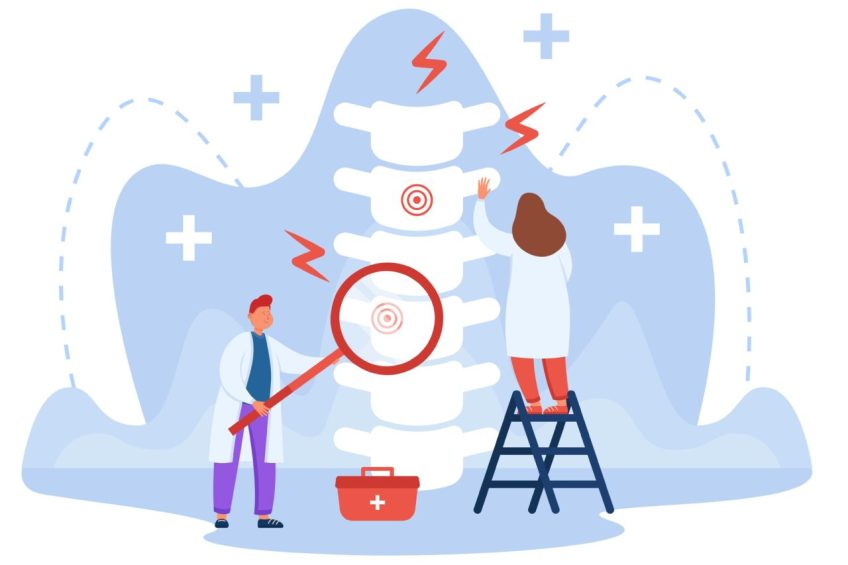In most cases, a specialist is able to make the diagnosis after physical examination and medical history, and imaging tests are done only to confirm the diagnosis and provide additional information.
Low back pain is a common problem, especially in developed countries. These pains can have several causes, so it is recommended to consult a specialist to determine the exact cause of the condition that leads to back pain.
After low back pain, it is advisable to go to the family doctor / general practitioner. He will perform a physical examination and discuss his symptoms and medical history with his patient, and then determine which doctor will refer the patient to.
The diagnosis for a disease presenting symptoms of low back pain can be made by a variety of specialists, including orthopedists, rheumatologists, neurologists, or even internists if there is suspicion that the pain may be related to an organ disease radiating to the lumbar area elsewhere (for example, kidney disease).
A complete medical history and physical examination can usually identify any serious condition that may be causing the pain. During the exam, the doctor will ask about the onset, location, and severity of the pain; duration of symptoms and any limitations in movement; history of previous episodes or any health conditions that may be related to pain.
Along with a detailed examination of the back, neurological tests are performed to determine the cause of the pain and the appropriate treatment. The cause of chronic lower back pain is often difficult to determine even after a thorough examination.
Imaging tests are not justified in most cases. Under certain circumstances, healthcare providers may recommend imaging to rule out specific causes of pain, including tumors and spinal stenosis.
CONTENT:
- Magnetic resonance imaging (MRI)
- Ultrasound imaging
- Bone scans
- Blood tests
- Radiography
- Discography
- Computed tomography (CT)
- Myelograms
Magnetic resonance imaging (MRI)
It uses a magnetic force instead of radiation to create a computer generated image. Unlike X-rays, which show only bone structures, MRI scans also produce images of soft tissues such as muscles, ligaments, tendons, and blood vessels.
An MRI may be recommended if a problem such as infection, tumor, inflammation, herniated disc, rupture, or nerve compression is suspected. MRI is a non-invasive way to identify a condition that requires prompt surgical treatment. However, in most cases, an MRI scan is not required during the early stages of back pain.
Ultrasound imaging
They are also known as ultrasound scanning or sonography, which utilizes high-frequency sound waves to obtain images inside the body. Sound wave echoes are recorded and displayed as real-time visual images. Ultrasound imaging can show tears in ligaments, muscles, tendons and other soft tissue masses in the back.
Bone scans
They are used for detecting and monitoring infections, fractures, or bone disorders. A small amount of radioactive material injected into the blood collects in the bones, especially in areas with an abnormality. The images generated by the scanner can identify certain areas of irregular bone metabolism or abnormal blood flow, as well as measure levels of joint disease.
Blood tests
These are not commonly used for diagnosing the cause of back pain. However, in some cases, healthcare providers may perform them to search for indications of inflammation, infection, or the presence of arthritis. Potential tests include erythrocyte sedimentation rate and C-reactive protein.
Radiography
It is often the first imaging technique used to look for broken bones or injured vertebrae. X-rays show bone structure and any vertebral misalignment or fractures. Soft tissues, such as muscles, ligaments, or clogged discs, are not visible in conventional X-rays.
Discography
It can be used when other diagnostic procedures fail to identify the cause of the pain. This procedure involves injecting a contrast dye into a spinal disc suspected to cause low back pain. Fluid pressure on the disc will reproduce the person’s symptoms if that disc is the cause.
The dye will show damaged areas on CT scans performed after injection. Discography can provide useful information in cases where people are considering lumbar surgery or where their pain has not responded to conventional treatments.
Computed tomography (CT)
It visualizes structures of the spine that an X-ray cannot capture, such as a ruptured disc, spinal stenosis, or tumors. Using a computer, CT scanning creates a three-dimensional image from a series of two-dimensional images.
Myelograms
They increase the diagnosis of X-ray and CT images. In this procedure, the doctor injects a contrast dye into the spinal canal to enable visualization of compression of the spinal cord and nerves, caused by herniated discs or fractures, on an X-ray or computerized tomography (CT) scan.


